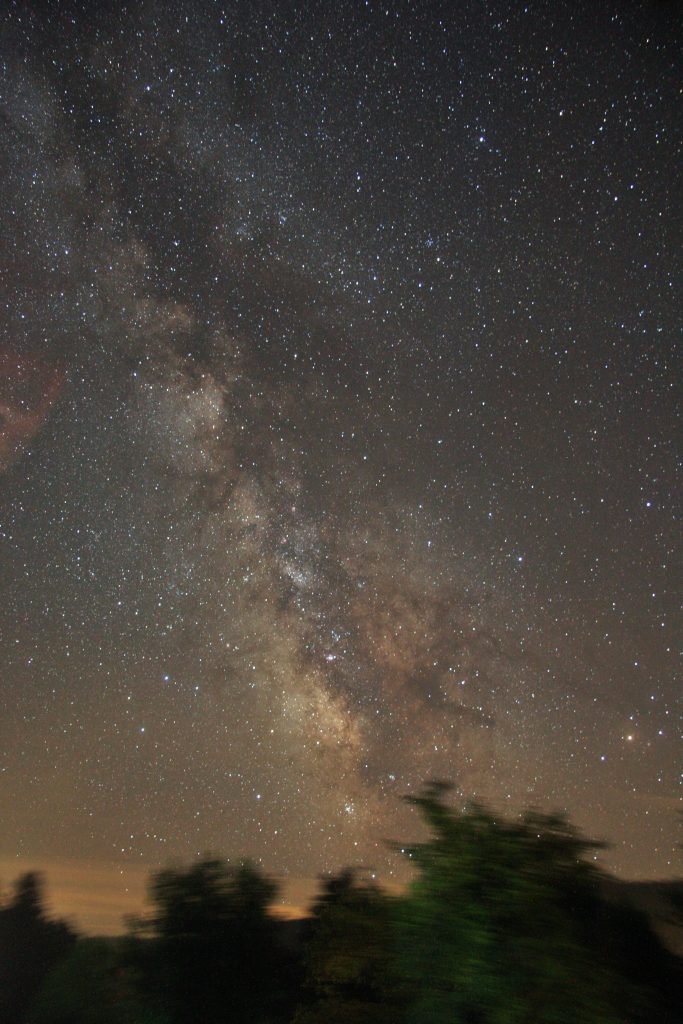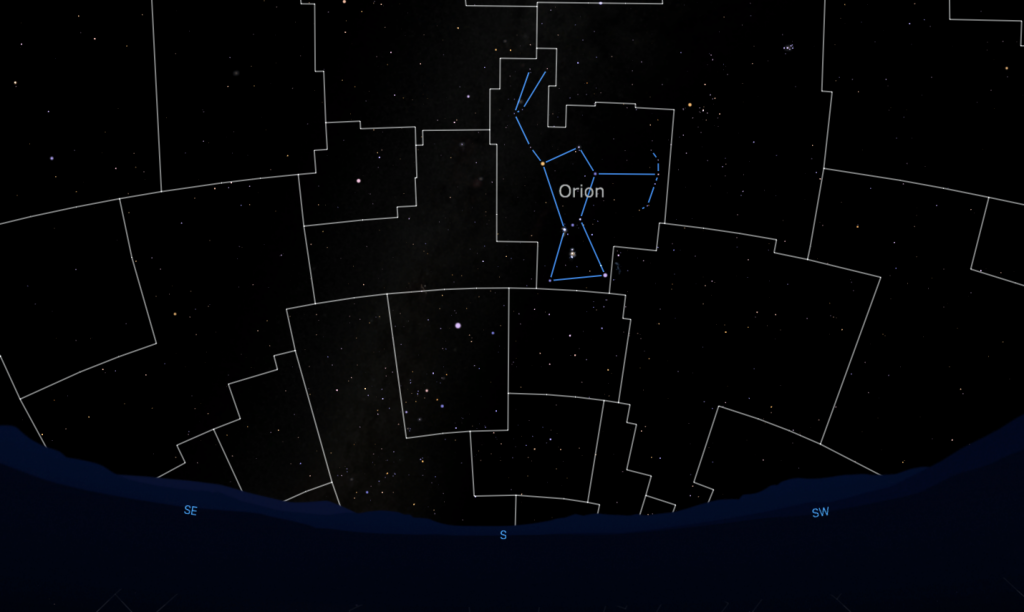Chapter 1 Part 2: Investigating the Number of Stars Visible to the Naked Eye

Science Notebook Assignment
Since this is a new investigation that is addressing a question separate from the Moon investigation, create a new note to keep all of the information from this investigation. You should record similar sorts of information as you did from the Moon investigation, and you should organize this note in a similar way.
Investigation question:
What factors about your observing location impact the number of stars you can see in the night sky?
You may not have looked at the stars recently, but for this investigation, you will be making at least one observation of the stars in the night sky at your school location. You can complete the observations for this investigation on the same night and from the same location when you are making an observation for the Moon investigation.
This investigation makes use of many of the tools and much of the information from an astronomical “citizen science” initiative referred to as “Globe at Night“. This project is asking people from all over the world to make observations and contribute them to the project to help answer a very similar investigation question to ours. You should feel free to contribute any observations you make for your class investigation to the Globe at Night project, however, just note that they ask for observations on only specific dates, and they may not match when you are observing for class.
In order to answer the investigation question, you will want to look at a specific patch of sky so you can study a well known set of stars with known properties. Astronomers refer to a group of stars in a specific region of sky that form a pattern a “constellation”, and you will be observing the constellation Orion for this investigation. Orion is one of the most easily recognized constellations in the sky because of the three stars that form a small pattern (called an “asterism”) referred to as Orion’s Belt. If your course is taking place at a time of year when Orion is not visible, the other constellations used by Globe at Night are all suitable substitutions.

Since you have to make an observation of the constellation Orion, first, you will want to explore what tools are available to you to help determine when and where to look to find Orion from your location. The image in Figure 1.2.1 above was captured from Starry Night Enthusiast 8, so you can use the software to help you answer this question. It is not very convenient to bring a computer outside when doing your observations, though, so many other tools exist to help you orient yourself on the sky. We recommend any or all of the following:
- You can buy or make a “planisphere”, which is a handheld paper or plastic spinning disk that shows the visible sky at a given time on a given date. The “Miller Planisphere” is a nice, heavy duty one, but the “Edmund Scientific Star and Planet Locator” is less expensive and works well. You can also make one using the instructions for “Uncle Al’s Star Wheels“; we recommend printing these on card stock so they will be robust enough to use.
- There are many books that have star maps in them. We recommend the classic “The Stars: A New Way to See Them” by Curious George author H.A. Rey.
- There are many apps for different smartphone operating systems that allow you to hold your phone up to the sky, and the app will identify where you are pointed on the phone screen. Examples are Star Walk, Sky Safari, and many others.
Using one of these tools, identify what time you will be able to see Orion, and go look for the belt to help you determine you have found it. Note that this constellation covers a very large area of sky.
In order to answer this investigation question, you are going to want to be able to identify the apparent brightness of the stars in Orion that you are able to see during your observation. Astronomers use the term “magnitude” to assign a numerical value to the apparent brightness of any star on the sky. You should review the information about the magnitude system at the Globe at Night site as a group before beginning this investigation. As part of the Globe at Night project, they have produced maps of Orion as seen from a variety of sites around the world, and you can use those to identify which map most closely matches your view of Orion from your observing location. In our class, we practice this by having the entire class complete the Globe at Night observation practice quiz.
After making at least one observation of Orion from your location and identifying the Globe at Night map that you think most closely matches your observation, each group should discuss the data recorded from their location. The discussion should conclude with each group writing a claim that answers the investigation question above. Each group should also cite evidence that supports the claim, and the final group claim and evidence should be recorded in your science notebook. The questions we use in class to help each group decide on their claim are:
- What were the conditions like during your observation that seemed to influence your view of the sky?
- How did the observing conditions compare for each group member? Which factors were common to everyone’s observation and which differed?
- Which factors seemed to have the most influence over your observation of the sky?
- Consider different places you have been; where you grew up or any place you may have traveled for a vacation or to visit family for example. Did you ever observe the night sky in those locations? Do you recall if there appeared to be more or less stars than you can see from your campus? What factors do you think led to any differences?
Science Notebook Assignment
Record your final group claim and evidence at the end of the note for this investigation. Transfer your final claim to the Evidence Bucket note you created previously.
In this investigation, we do not work on reasoning because the type of investigation question can be answered with evidence alone. However, this does not mean that there is no possible reasoning that can be applied to the answer. This is certainly something that you could continue to investigate on your own, that is, you can work to answer: why do certain factors influence the number of stars we can see from a given location?
Resources for further reading
There are several free, on-line textbooks for astronomy courses that are helpful references for our course. All of the following are useful resources for additional reading on any topic in our course:
If you want to read more about constellations, you can find more in the latter two references, in particular:
Constellations and Seasons at teachastronomy.com
Constellations in Section 2.1, the Sky Above at OpenStax Astronomy
H.A. Rey, the creator of Curious George, was an enthusiastic observer of the night sky. In the PBS children’s TV show, one of the early episodes features Curious George conducting an investigation just like this one. The episode is Season 1, Episode 16 “Curious George Sees Stars“. It is a great supplement to our investigation to watch this episode.
There is a children’s storybook called “How Many Stars in the Sky” by Lenny Hort that also features an investigation like this one. We recommend that book, too, as an additional resource for reading beyond our investigation.

